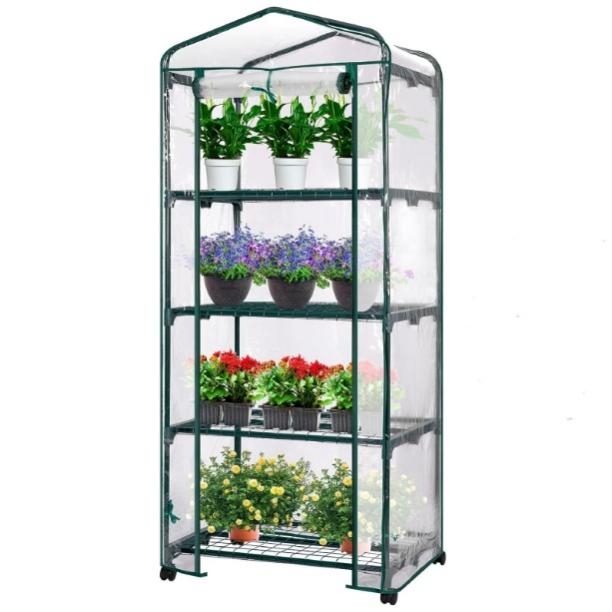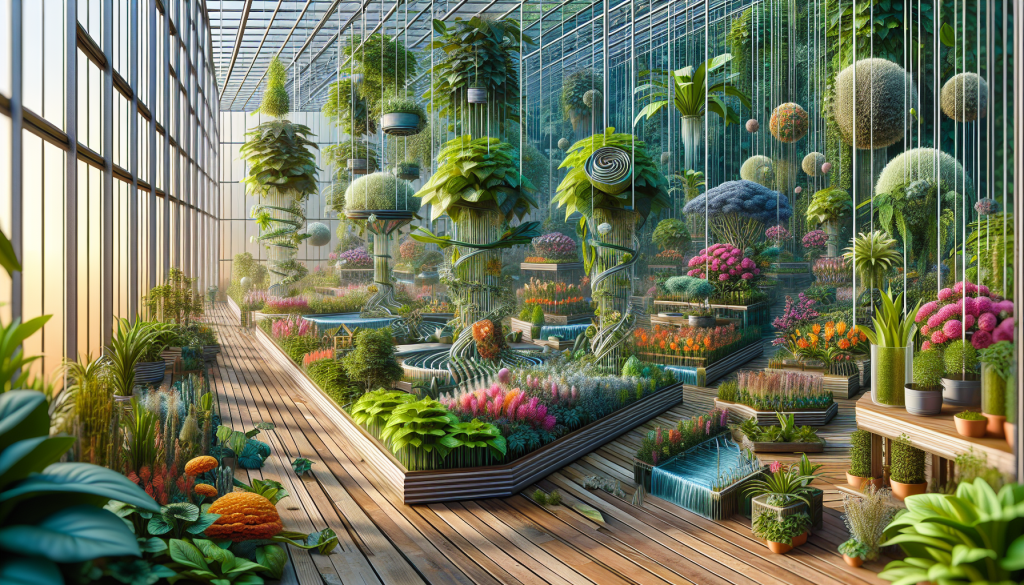All Posts
How to Use Small Greenhouse for Beginner
Using a mini greenhouse for beginners can revolutionize the way you nurture plants.
These compact garden greenhouse aren’t just about shielding your seedlings from the whims of unpredictable weather; they also involve extending the growing season, optimizing space in small gardens, and introducing elements of control over the plant environment.
In this guide, we’ll walk you through setting up small greenhouse, selecting suitable plants and ensuring their thriving growth, along with tips for choosing the perfect model for your gardening aspirations.
What is a Mini Greenhouse?
Mini greenhouse is a small enclosed structure designed to create a controlled environment for plants, protecting them from extreme weather conditions and pests while providing a favorable microclimate for plant growth. And it also can be called as cold frame.
These compact devices are well-suited for small gardens, balconies, patio or other indoor areas, being highly effective in extending the growing season and nurturing delicate seedlings.
How to Plant and Grow in a Portable Mini Greenhouse
1. Selecting Suitable Plants
The key to a thriving mini greenhouse lies in choosing plants that thrive in warm, humid conditions. Herbs like basil, cilantro, and mint flourish in these environments, as do leafy greens such as spinach, kale, and lettuce. Small vegetables, including cherry tomatoes and peppers, also adapt well.These plants not only grow effectively in the controlled climate of portable mini greenhouse but also produce abundantly in the compact space available.
2. Seasonal Planning
Strategic seasonal planning can significantly enhance the productivity of small greenhouse. Starting seeds early in the year can extend the growing season, allowing plants like tomatoes and peppers to get a head start before transplanting outdoors.
During the peak of summer, the greenhouse is perfect for growing heat-loving plants like cucumbers and eggplants, thriving in warm conditions. As cooler months approach, the small greenhouse can protect late-season crops, extending the harvest of vegetables like carrots and beets.
3. Pest and Disease Management
The enclosed space of a mini greenhouse can inadvertently become a haven for pests and diseases if not managed carefully. Regular checks for signs of infestation or disease are crucial. Implementing natural remedies, such as neem oil for pests or baking soda for fungal diseases, can help maintain a healthy environment. Ensuring proper ventilation and avoiding overcrowding also reduces the risk of problems.
4.Soil and Water Management
Good soil and water management are the foundations of successful small greenhouse gardening. Use high-quality, well-draining soil to ensure your plants have the best start. Monitor watering carefully; the enclosed nature of the greenhouse means less evaporation, so overwatering can lead to root rot and other issues. Moderate watering schedules help maintain ideal moisture levels.
5.Temperature Regulation
Maintaining appropriate temperatures is crucial, especially during extreme weather conditions. Monitor indoor temperatures closely, using shade cloth or open door&window to cool the greenhouse during hot weather. Conversely, during cooler periods, consider using heaters or insulation blankets to keep plants warm. Understanding the temperature preferences of specific plants will guide you to do these adjustments.

Benefits of Portable Greenhouses
1. Flexibility
The inherent mobility of portable greenhouses allows you to adapt to the ever-changing needs of your garden throughout the year. Whether you’re seeking the ideal spot for sunlight exposure, protecting plants from adverse seasonal elements, or simply need to reclaim space temporarily, the ability to move the greenhouse offers unparalleled adaptability. This flexibility is particularly advantageous for renters or landscape designers with evolving needs.
2. Extend Growing Season
One of the most significant advantages of mini greenhouses is their ability to extend the growing season. But how do greenhouses help plants grow? By shielding plants from early frosts and maintaining warm environments with seasons change, you can start planting earlier in spring and continue harvesting well into the cooler months. This extended season is a boon for gardeners looking to maximize yields and enjoy fresh produce long-term.
3.Pest Control
The small greenhouses act as physical barriers, protecting your plants from various common garden pests such as aphids, caterpillars, and slugs. This protection reduces reliance on chemical pesticides, thereby forming a more organic and eco-friendly gardening approach. Additionally, it helps prevent the spread of diseases often carried by pests, contributing to the establishment of a healthier garden ecosystem.
4. Humidity Control
Maintaining optimal humidity levels in open gardens can be challenging, especially in dry or windy climates. The home portable greenhouses help retain moisture in the air, creating a humid environment conducive to the robust growth of many plants, particularly seedlings and tropical varieties. This controlled humidity enhances germination rates and plant growth, resulting in stronger, healthier plants.
5.Water Conservation
The enclosed environment of small garden greenhouses reduces water evaporation, allowing you to utilize water more efficiently. This conservation is particularly beneficial during drought periods or in areas with water restrictions. Through minimizing the need for frequent watering, you not only conserve water resources but also reduce the labor involved in maintaining the garden.
6.Space Efficiency
For those with limited gardening space, Home cold frame allow for vertical gardening on shelves and racks, maximizing the use of available area.In our experience, this efficient use of space is especially suitable for urban gardeners or those with smaller yards, enabling them to grow more plants in the same footprint as in an open garden. Of course, if you’re wondering how many plants a greenhouse can accommodate, the capacity of a mini plant greenhouse is evidently lower than that of a full garden greenhouse.
7.Temperature Control
Compared to open gardens, portable greenhouses can manage temperature fluctuations more effectively. On cold days, they absorb heat to keep plants warm, while on hot days, opening vents or doors can cool the interior. This temperature control prevents plant stress, creating a more stable and favorable growth environment.

